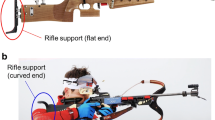Abstract
Lately, numerous studies have been performed to design composite monocoque’s with high strength and low weight for various student-level racing contests. The objective of this paper is to develop an insightful methodology to design and developed a lightweight composite monocoque. The monocoque is designed to pass the mandatory static load tests laid down by the International Automobile Federation (FIA) Formula 3. These Formula 3 tests are considered the baseline of the desired structural integrity of the composite monocoque. The presented design technique emphasizes on a monocoque developed for Sports Car Club of America races. The three standard load tests performed on the monocoque are survival cell side test, fuel tank test and side intrusion test. A sandwich layup of bidirectional-woven carbon/epoxy prepreg and aluminum honeycomb is optimized for minimum weight while predicting the unknown properties of layup, and ensuring the monocoque does not experience failure. The approach intends to achieve minimum weight with high torsional rigidity and is capable of being used for the design and analysis of any kind of formula-type composite monocoque.





















Similar content being viewed by others
References
SCCA Road Racing General Competition Rules. CreateSpace Independent Publishing Platform. ISBN-10: 1547101628 (2017)
B.P. O’Rourke, The uses of composite materials in the design and manufacture of formula 1 racing cars. Proc. Inst. Mech. Eng. D J. Automob. Eng. 204(1), 41–48 (1990). https://doi.org/10.1243/PIME_PROC_1990_204_131_02
F.C. Campbell, Introduction to Composite Materials (ASM International, Materials Park, 2010)
R.M. Koide, G.V.Z.D. França, M.A. Luersen, An ant colony algorithm applied to lay-up optimization of laminated composite plates. Lat. Am. J. Solids Struct. 10, 491–504 (2013)
J. Christensen, in Carbon Fibre Monocoque Chassis Feasibility and Manufacturability for FSAE. SAE Technical Paper 2015-01-0078 (2015). https://doi.org/10.4271/2015-01-0078
J. Sloan, in Formula 1 team accelerates design to track speed. High-Performance Composites. http://www.compositesworld.com/articles/formula-1-teamaccelerates-design-to-track-speed. Accessed 1 May 2008
F.W. Milliken, D.L. Milliken, Race Car Vehicle Dynamics (SAE International, Warrendale, 1995)
J.C. Dixon, Tyres, Suspension and Handling (Cambridge University Press, Cambridge, 1991)
G. Savage, Formula 1 composites engineering. Eng. Fail. Anal. 17, 92–115 (2010)
C. Sulsters, Simulating Formula One Race Strategies (VRIJE Universiteit, Amsterdam, 2018)
E. Law, S. Raju, L. Thompson, in Design of a Winston Cup Chassis for Torsional Stiffness. Motorsports Engineering Conference and Exposition, Dearborn, Michigan, USA (1998)
L. Hamilton, C. Joyce, C. Forero, M. McDonald, US Naval Academy, Production of a Composite Monocoque Frame For Formula SAE Racecar (SAE International, Warrendale, 2013)
G. Savage, Composite material technology in F1 motor racing. Honda Racing F1 Team 91, 92 (2008)
ANSYS R19.2 help and documentation
Gurit, Datasheet for RC 200T SE 84LV (2018), www.gurit.com. Accessed 27 May 2018
L.R. Weidner, D.W. Radford, P.A. Fitzhorn, A Multishell Assembly Approach Applied to Monocoque Chassis Design (SAE International, Warrendale, 2001)
Formula 3 Technical regulations, www.fia.com/3-formula-one-technical-regulations-2018. Retrieved 30 April 2018
I.M. Daniel, Failure of composite materials. Strain Int. J. Exp. Mech. 43(1), 4–12 (2007)
K.F. Karlsson, B.T. Astrom, Manufacturing and applications of structural sandwich components. Compos. Part A Appl. Sci. Manuf. 28(2), 97–111 (1997)
F.E. Penado, Effective elastic properties of honeycomb core with fibre-reinforced composite cells. Open J. Compos. Mater. 3, 89 (2013)
Plascore, Datasheet for PCGA-XR2 commercial Al honeycomb. www.plascore.com. Accessed 1 Mar 2018
D.L. Milliken, E.M. Kasprzak, L.D. Metz, W.F. Milliken, Race Car Vehicle Dynamics (SAE International, Warrwndale, 1995). ISBN 978-0-7680-1127-2
A. Deakin, D. Crolla, J.P. Ramirez, R. Hanley, in The Effect of Chassis Stiffness on Race car Handling Balance. SAE Motorsports Engineering Conference and Exposition(2000)
E. Sampo, A. Sorniotti, A. Crocombe, Chassis Torsional Stiffness: Analysis of the influence on Vehicle Dynamics (SAE International, Warrendale, 2010)
Author information
Authors and Affiliations
Corresponding author
Additional information
Publisher's Note
Springer Nature remains neutral with regard to jurisdictional claims in published maps and institutional affiliations.
Rights and permissions
About this article
Cite this article
Kamble, M., Shakfeh, T., Moheimani, R. et al. Optimization of a Composite Monocoque Chassis for Structural Performance: A Comprehensive Approach. J Fail. Anal. and Preven. 19, 1252–1263 (2019). https://doi.org/10.1007/s11668-019-00711-0
Received:
Accepted:
Published:
Issue Date:
DOI: https://doi.org/10.1007/s11668-019-00711-0




